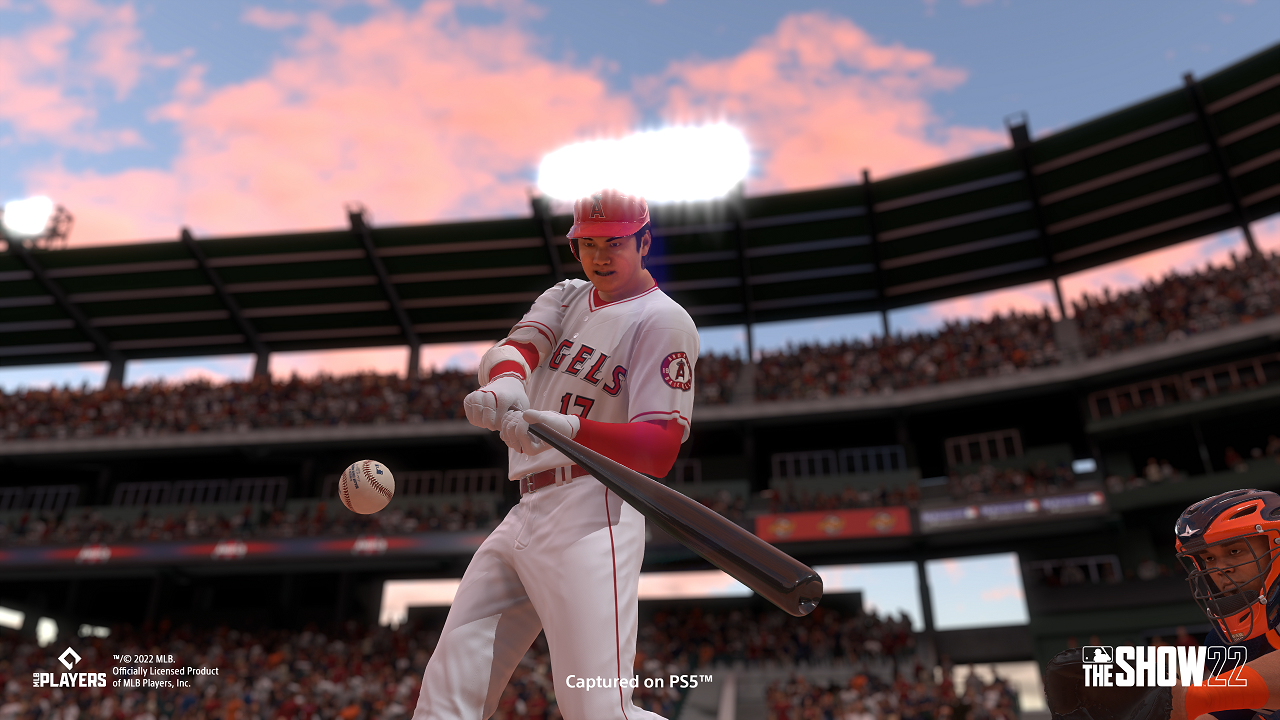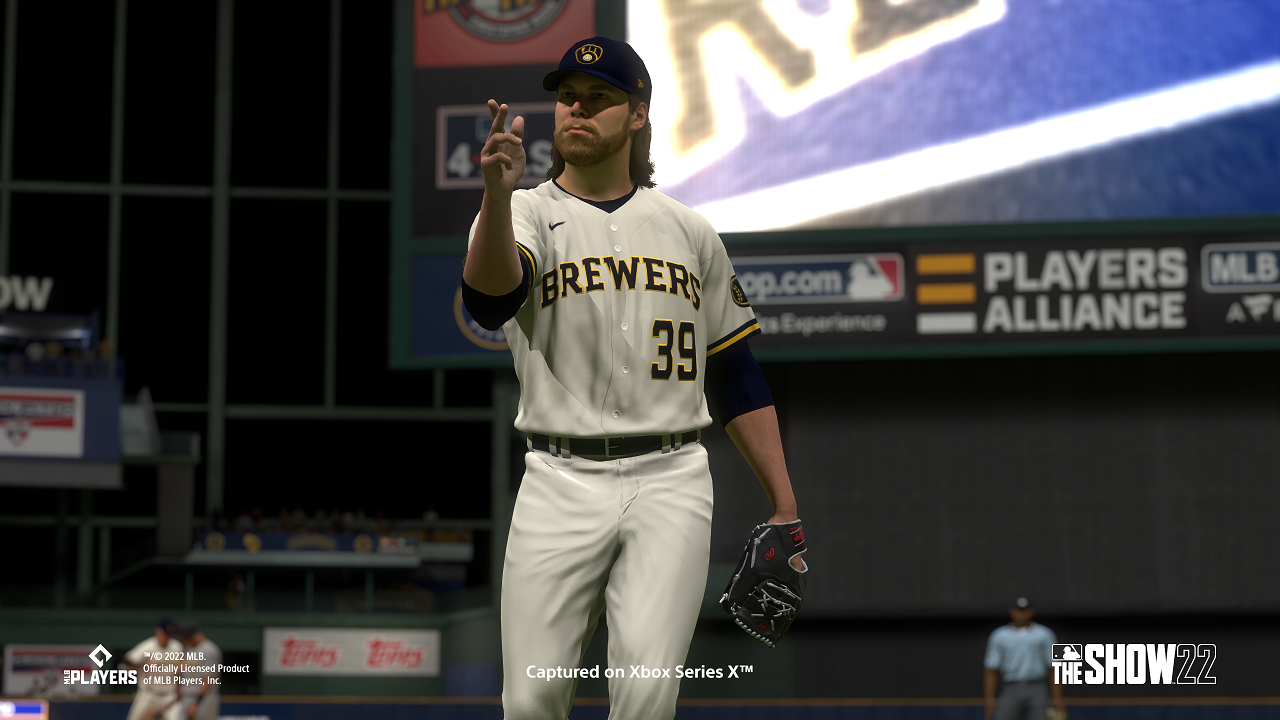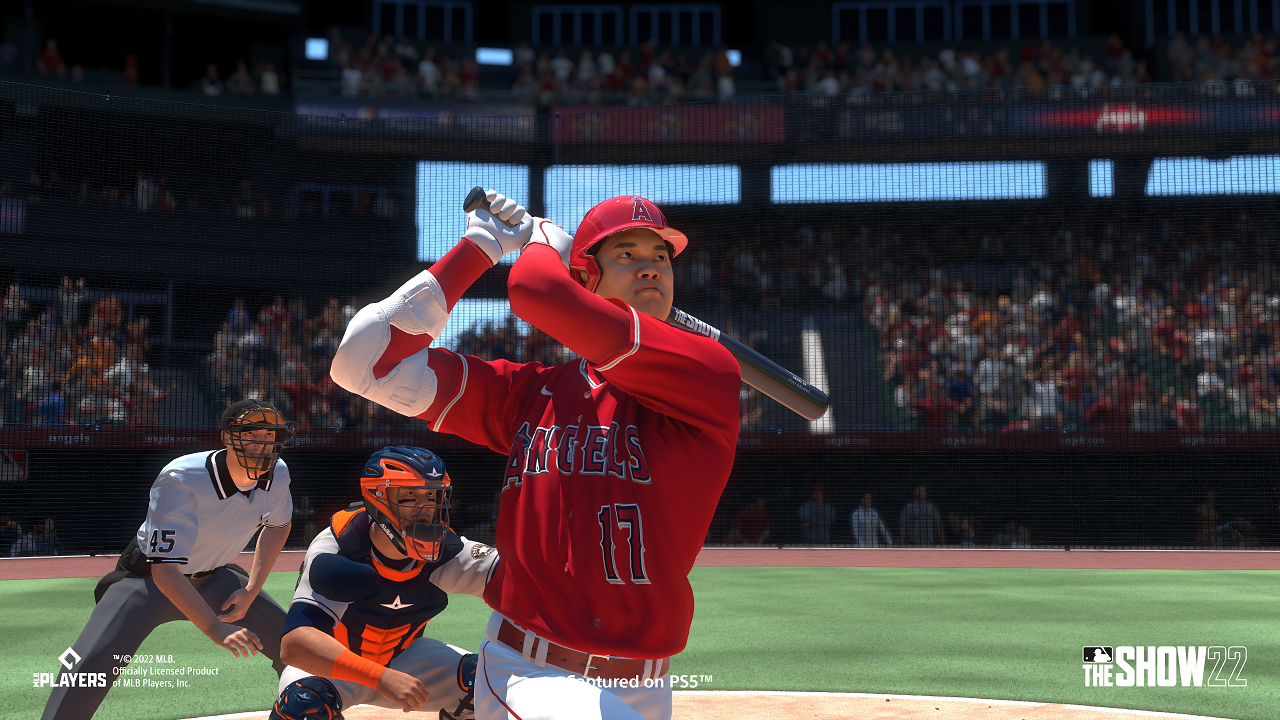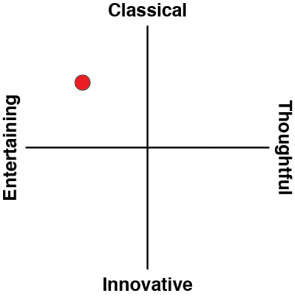Sony is on to such a good thing with MLB The Show that it would rather have its San Diego development studio work on a cross-platform release than risk losing the baseball license (I would bet significant dollars that the MLB told Sony that the previously PlayStation-exclusive series was going multi-platform or the MLB was going walking). Their confidence in this series is well-founded. In my mind, it is the very best of the AAA-sports titles, and MLB 22 continues that tradition.
As cricket is my main sport in life, I’m naturally also partial to baseball, and of course that factors into why MLB is my big-ticket sports title of choice. Inferior to cricket as the sport itself might be, it’s still a close cousin to the great game, is an excellent second as a spectator event, and baseball is also perfect for video games, as its core mechanics can be boiled down to a couple of button presses. Meanwhile, the hand-eye coordination skill involved in playing the sport well also means that the video game adaptation of those mechanics can be a challenge into perpetuity. By that I mean the real difficulty of baseball comes down to your skills more than just what the developers can throw into the AI.
Where other sports have increasingly become more complex in the inputs, to the point that I feel like I should just throw on a fighting game like Tekken to give myself a break from their ridiculously complex combo systems, baseball remains a “simple” matter of watching a ball hurled in, judging whether to swing at it in less than a microsecond, and then making sure you connect with it for a good, clean hit that somehow combines accuracy and distance. With a bat that’s only a little thicker than a stick. Baseball is a beautiful sport in its maddening simplicity, and there’s nothing quite like the sensation of scoring the elusive home run, stealing a base, or pitching a clean sheet.
What MLB The Show has traditionally done well is capture the atmosphere and energy of the sport. It’s less fast-paced than ice hockey, and less overtly strategic than NFL or FIFA, but baseball is a sport of absolute focus, atmosphere and aesthetics. It’s a fundamentally beautiful game with the way it moves and flows, and this year’s edition has done the usual stand-up job of capturing that. From the relatively modest stadia of the AA leagues through to the massive, noisy arenas of the big show itself, every location is captured in gorgeous detail. The way that a match moves from afternoon into the night, with warm sunlight being replaced by the piercing harshness of the night, is not just visually impressive, it also affects how you play the game, too. For example, I see the ball better at “night”, so I sweat that little more when I’m at-bat during the low afternoon innings. Above and beyond everything else, there is an air of authenticity to MLB The Show, and it doesn’t really matter how long you play for, that impression never goes away.
What I could have done with less of was the broadcast-style presentation in the game’s main career mode. I can more-or-less deal with in-game commentary, which doesn’t take too long to become repetitive in MLB 22, but is at least inoffensive window dressing that adds to the atmosphere. What I’m significantly less of a fan of is the intermittent “interviews” that occur between matches, in which a “Road to the Show” podcast features interviews with baseballers, coaches and other luminaries. I know that this is meant to be how the game represents your character’s developing career, by providing some insight about their performance, but it, as standard for American sports commentary, is just so brain-numbingly shallow. “So what can a player do to improve their performance in the game?” the interviewer, Ben Gellman, asks. “They just need to show up and keep giving it their all,” the “expert” helpfully chimes in, as though that’s some kind of great insight. Sadly this is representative of how American sports commentary style is big energy and platitudes rather than any kind of useful analysis, so the team do deserve credit for capturing it perfectly in MLB 22, but I tune that stuff off where I can when watching the real sport. I would have appreciated the option to give Ben and his “guests” the snip here.
Career mode is the main part of MLB The Show 22, as it always is for the series, and the way it’s structured is absolutely brilliant. You only ever play the bits that your player is involved in, which usually means 4-5 “at-bats”, as well as a handful of fielding moments. Or, if you’re pitching, the pitching bits and the very rare time you’re called to bat as well. The game skips past the bits that you’re not involved in, and this means the incredibly long baseball seasons whoosh through quickly enough that you don’t feel like you’re going to have to sit at the game for weeks on end just to finish a single career. The downside is that the result of games does seem to rest a little too significantly on your shoulders. There is a distinct tendency for the game to reward you with a win when you don’t make mistakes during your little cameos within the overall event, and then slap you with a loss when you do, and it’s a little too artificial and obvious about this. Then again, you certainly get to enjoy being the centre of the team this way, and that’s the kind of wish fulfillment that a career mode is meant to indulge.
Outside of the career mode, there’s a lot of stuff in MLB, though ironically the one thing I want isn’t there, and hasn’t been for a couple of editions of the series now. There’s the microtransaction-laden and card-heavy stuff, as all big sports games have, but I refuse to touch that, on account of them being the worst thing to happen to sports games. There’s a franchise mode, which is neat in that it lets you manage a team and turn it into a dynasty, and there’s some online play, exhibition, and a fun retro mode that takes the game back to the time when the SNES was dominant. What there isn’t is a simple single season mode. I don’t necessarily want to go through all the management stuff, and yet there are times when I’d rather play as a team rather than the career mode. I have always appreciated the season mode in my sports titles as they give me an easy and accessible way to kick back and enjoy the sport, and that way of playing is just not there in MLB The Show 22. It wasn’t in previous iterations, either, so this is an ongoing complaint that I have, but I keep wishing for Sony to see the light and add it back in, and they never do. Some of us really do just want to play a season. One match after the other. No gimmicks, bells or whistles. It works for Super Mega Baseball and even R.B.I Baseball. It is something that genuinely needs to be included in this series too.
The other complaint that is almost certainly going to be levelled at MLB The Show 22 is that it’s not enough of a step forward compared to its predecessor. Certainly, there are a lot of subtle changes behind the scene that mean it plays fundamentally better and has a more textured take on the tactics of pitching and the physics balance when at-bat, but those are hard to see. Meanwhile, it does look gorgeous, but then so did its predecessor. A dearth of new modes and ways to play don’t do MLB 22 any favours in this regard either. The only outright new thing that was added is online co-op, and that’s a pretty niche feature (though will no doubt be appreciated by those that will use it). And yet, though it’s hard to see where the evolution of MLB 22 is on paper, it is still a solid step forward from the previous year’s edition. If your last MLB title was 2020 or earlier, be prepared to be astounded by just how far the series has come in just a few years.
Finally, I know this is an MLB licensed title, but I’m thoroughly sick of American sports acting like the only version of their sports are played within America. If B-tier sports titles like Cricket, Rugby, AFL, Volleyball and Handball can include international teams and competitions, there’s no excuse for developers of the size and resourcing as San Diego studio here not to follow suit. I realise that the Japanese league is likely a no-go for MLB (since Konami produces its own NPB-licensed title), but what about Mexico? Cuba? Korea? Australia? What about the international teams? People around the world play these video games, Sony. It’s time to think beyond the World Series.
Overall, the biggest problem Sony faces is in getting more casual fans to enjoy its baseball games. The hardcore are going to love it, and mechanically, MLB does a great job of giving you ways to fine-tune how you play, the control system that works for you, and so on. This is effortlessly the best baseball game we’ve seen to date. However, what it doesn’t do is make players comfortable with it before throwing them in the deep end. Whether it’s endless statistics and career-altering decision trees in the career mode, the overwhelming experience of having cards and items and microtransactions thrown at you in that mode, or the need to manage an entire team while also dealing with the on-field performance, MLB The Show 22 is difficult to get into if you’re a casual fan of the sport. A simple season mode would have gone a long way to address that, but, for whatever reason, Sony doesn’t seem overly concerned with making its series the catalyst that converts people with a casual interest in baseball into fans,











